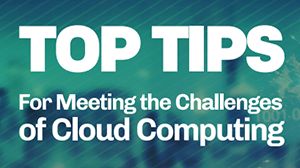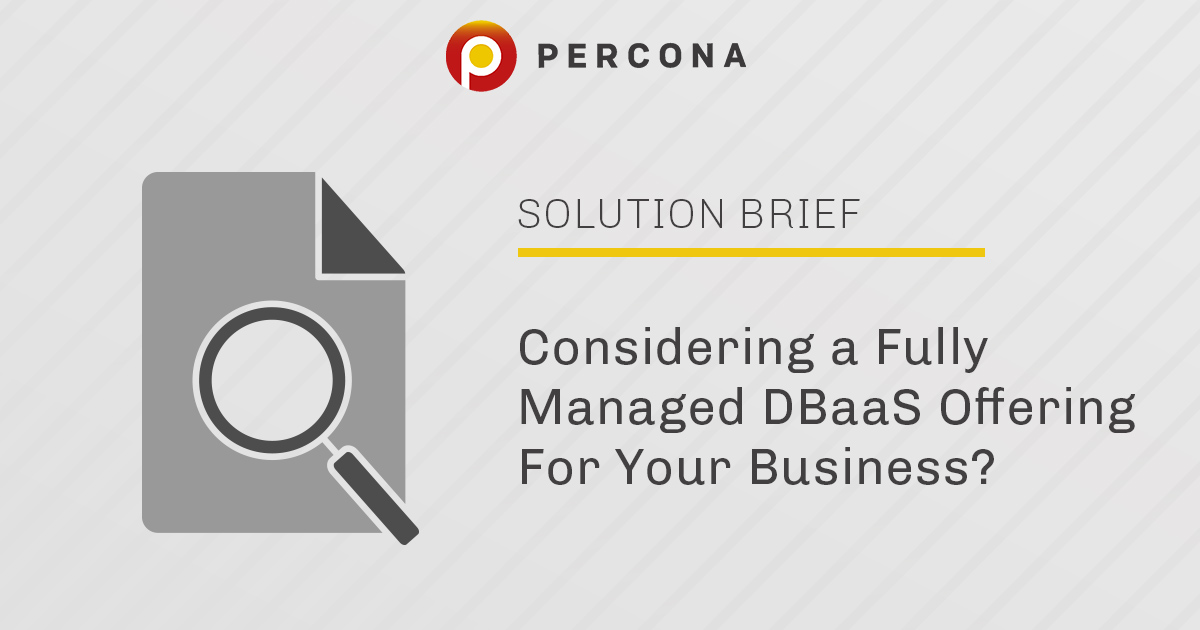Flexibility, performance and cost management make cloud database environments an easy choice for many businesses. In fact, according to our recent survey, 41% of enterprises run databases in multiple cloud providers and 61% of enterprises are running both on-premises and cloud.
If you are thinking of moving your database to the cloud, or already there, make sure you know the issues to watch out for, as well as how to get the most out of your DBaaS cloud configuration.
Which cloud provider is right for your business?
When contemplating database infrastructures in the cloud, you need to determine which cloud provider is best for your unique database and business needs. From cost to security, there are many factors to consider. Download our free eBook to help you understand what’s under the hood when it comes to cloud database technology, so you can make more informed decisions and avoid costly mistakes as you develop and execute your cloud strategy.

The Benefits of Amazon RDS for MySQL: Discover the six important benefits of Amazon RDS, and why it may be right for you.

Embrace the Cloud with Microsoft Azure: 95% of Fortune 500 companies use Azure — discover why.

Benefit from Ongoing Innovation with Google Cloud: See what Google is doing to distinguish itself as one of the top cloud providers. Learn more

A Database as a Service platform like Amazon RDS reduces much of the basic operational side of database deployment, radically simplifying server provisioning, but it does not remove all the challenges of successful deployment, or guarantee that things will be pain-free as your business expands.
As your applications grow the needs and workloads of your database grows. Whether you deploy MySQL, MariaDB, MongoDB, or PostgreSQL on a managed Database as a Service platform, there are many things to consider. Learn how to set up and manage the best DBaaS environment for your unique business.
Download WhitepaperHere are the five questions (or roles) you need to ask before migrating to DBaaS:
- Is your definition of “fully managed” the same as your cloud provider?
- Who on your team is responsible for setting up and managing your DBaaS?
- Who is going to ensure you are not overpaying?
- Who bridges the gap between the application and the database?
- Are you going all-in on a single cloud or multi-cloud?
Follow our Cloud Migration Checklist to make sure you’re ready to migrate:
- Decide which cloud provider to use.
- DBaaS or roll your own?
- Who is going to ensure you are not overpaying?
- Know the differences and trade-offs between your on-prem and the cloud.
- Understand how to manage consumption-based pricing.
“Percona provided excellent insight as we worked through . . . any questions that we had. They confirmed that our choice of Amazon Aurora was appropriate for this development, and helped us to get the best out of the environment.”
— Jeremy Gerk Head of Application Development, Madwire
What are the top challenges of running a database in the cloud?
So, you have decided to migrate to the cloud. Now what? Once companies arrive on the cloud, we often see them struggle with costs, downtime, and operational issues. The main issue is that the expectation of being “fully managed” turns out to be mostly or only operationally “managed.”
Explore our checklists, posts, tools, and infographics to help you learn more about the challenges of optimizing and managing your database in the cloud:
Are cloud databases really “fully managed”?
Your company is unique. Often, there is not just one database that suits all your needs, or one cloud provider, or one way to get the help you need. Whether you use AWS, Microsoft, or Google for your database as a service, know that you still have some responsibility to make sure your database is properly “managed”. Let us help you navigate the world of shared responsibility. Read our blog series, The Shared Responsibility Model of Security in the Cloud to learn more.
Looking for help? Learn how Percona Services can help you get the most out of your DBaaS environment:
Consulting
Need longer-term, or more consistent help? Need to supplement your DBA staff?
Managed Services
24x7 managed support from database experts that will ensure you get the most out of your database environment.
Are you scaling your database by credit card?
With open source cloud databases, it’s easy to spin up new instances. Are you spending too much on your environment? How do you know?
Need to reduce cloud costs? Contact Percona Consulting
How do you build your own DBaaS?
If you already have a number of database applications running on open source database services, then you might want to consider building your own DBaaS. With the right tools and expertise, you can leverage your own private DBaaS across multiple cloud providers. Learn more about how to use a multi-cloud environment to your advantage as well as the pro’s and con’s of exploring this option, and take a moment to explore containers and how Percona Kubernetes Operators can help you manage and optimize your data.

Percona Cloud Native Autonomous Database Initiative
Expanded support for cloud native applications to make it easier for organizations to manage hybrid environments.
Learn more >>
Kubernetes – Introduction to Containers
Kubernetes Operators enable you to easily balance resources against demand and provide an avenue for consistent and reliable deployment of new services.
Learn more >>
Deploying Percona Kubernetes Operator for XtraDB Cluster in AWS
It is only natural to ask, “How can Kubernetes be used in AWS?“ and the answer is – not that different than with other cloud vendors.
Learn more >>Embrace the Cloud!
Percona can help you make the transition and optimize your cloud database.










